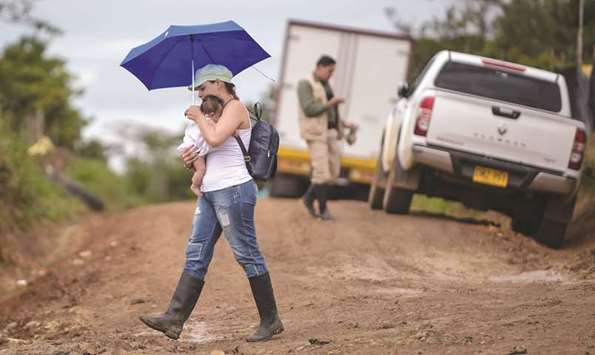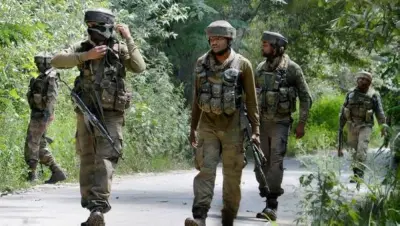Farc leader Rodrigo Londono, alias Timochenko, is scheduled to formally conclude the disarmament process at a ceremony with President Juan Manuel Santos in the central town of Mesetas, the group’s historic base, at 1500 GMT.
Part of a 2016 peace deal with the Farc, the move is a key part of efforts to end the long territorial and ideological conflict.
But the process has been blighted by ongoing violence involving other armed groups in recent weeks.
“It marks the end of the main guerrilla group in the western hemisphere,” said Jorge Restrepo, director of the conflict analysis centre CERAC.
“It marks the beginning of the post-conflict period...and of a difficult process of reconciliation in the country.”
United Nations monitors said Monday they “have the entirety of the Farc’s registered individual arms stored away”, except for some that were exempted for transitional security at demobilisation camps until August 1.
Separately, the UN mission is continuing to extract and destroy other weapons and munitions stashed in remote hiding places which the Farc have identified and surrendered to the monitors.
Londono called the disarmament “a historic moment for Colombia.”
“The laying down of arms is an act of will, courage and hope,” he wrote on Twitter.
Santos said it was “the beginning of a new Colombia which is advancing towards peace,” in a Twitter message.
The former fighters are now due to make the transition into civilian life. The Revolutionary Armed Forces of Colombia (Farc) will transform into a political party after a congress in August.
The accord, first signed in November, was at first narrowly rejected by Colombians in a referendum before it was redrafted and pushed through congress.
Critics such as conservative political leader Alvaro Uribe said it was too lenient on Farc members, some of whom will get amnesties or reduced sentences for crimes committed during the conflict.
The Farc have promised to help stamp out the drug production that has fuelled the conflict in areas under its control.
The state promised to develop alternative sources of revenue for growers of coca, the raw ingredient of cocaine.
The Farc launched its uprising in 1964 over land rights for poor rural communities.
The conflict drew in leftist guerrillas, right-wing paramilitary groups and state forces.
It has left 260,000 people confirmed dead, more than 60,000 missing and 7mn displaced.
The Farc has pledged to use its assets to compensate victims.
The accord promises land and credit lines for rural communities, with millions of dollars of investment.
Santos says he wants to seal a “complete peace” by reaching a deal with the country’s last active rebel group, the leftist National Liberation Army (ELN).
The ELN started talks with the government in February, but has been blamed for ongoing confrontations with state forces.
The ELN kidnapped two Dutch journalists on June 19 and freed them five days later.
Officials say remnants of right-wing paramilitary groups are also fighting the ELN in rural areas for control of the drug trade.
Three women were killed in a bombing at a crowded shopping centre in Bogota on June 17.
That was blamed on a fringe extremist group, the Revolutionary People’s Movement (MRP).


